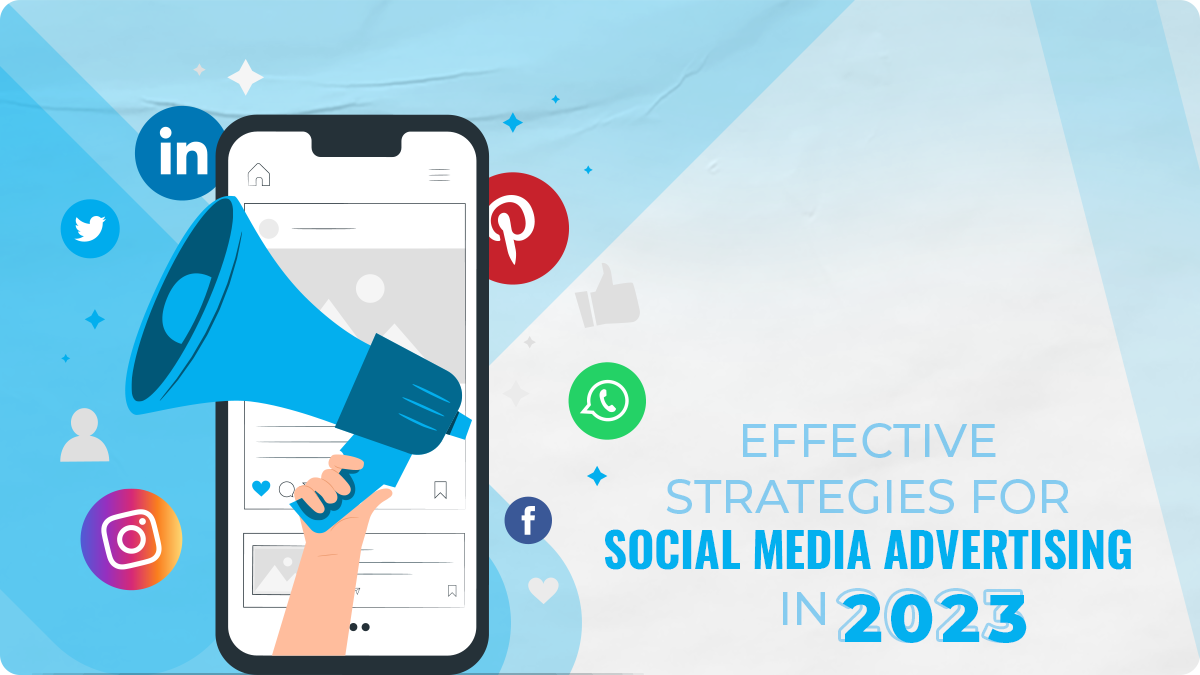Social media has become a vital part of our lives, affecting the way we communicate, consume information, and connect with others. Its impact is vast, reaching individuals and communities on a global scale.

In 2023, social media continues to grow in popularity. It’s becoming increasingly important for brands to have a strong online presence on these platforms. With 87%* of social media marketers believing that consumers will search for brands on social media more frequently than on search engines in 2023, it’s crucial to ensure that your brand is easily discoverable. To create an effective social media strategy, it’s important to understand your target audience, their preferences, and how to engage with them.
More than 90% of US businesses spend money on social media marketing, with a total paid advertising spend of $56 billion expected. But it’s critical to understand where all of that money is going and how you may profit from this digital marketing plan.
This article will teach you all you need to know to create a successful social media advertising plan, including:
What exactly is paid social media marketing?
Paid advertising on social media refers to promoting and boosting content or advertisements on social media platforms by paying for increased reach, visibility, and engagement. It involves allocating a portion of your marketing budget to advertise your brand, products, or services directly to users on social media platforms.
Paid advertising on social media offers several benefits, including:
Increased Reach: Paid ads enable you to extend your reach beyond your organic audience, ensuring your content is seen by a wider user base.
Precise Targeting: Social media platforms offer detailed targeting options, allowing you to reach specific demographics, interests, and behaviors that align with your target audience.
Enhanced Visibility: Paid ads can improve the visibility of your brand, products, or services in users’ feeds, increasing awareness and recognition.
Measurable Results: Social media advertising provides analytics and performance metrics that allow you to track the effectiveness of your campaigns and make data-driven decisions.
Flexibility and Control: You have control over your ad budget, targeting options, ad formats, and schedule, giving you the flexibility to optimize your campaigns based on your goals and audience response.
Paid advertising on social media can be a powerful tool to drive brand awareness, reach new customers, and generate leads or sales. However, it’s essential to develop a well-defined strategy, set clear objectives, and continuously monitor and optimize your campaigns to achieve the best results.
Social Media Ad Types
Although social media advertising differs depending on platform, location, and KPI, they are often content-driven, focusing on eye-catching photographs and videos to capture the user’s attention on an otherwise noisy screen.
These are some examples:
Ads using static images
Video advertisements
Carousel advertisements
Direct-message advertisements
Ads that generate leads
Ads that can be purchased
Interactive advertisements
Advertisements with sponsored hashtags
The choice between SEO (Search Engine Optimization) and Social Media Advertising
Social media and SEO (Search Engine Optimization) are both important elements of a comprehensive digital marketing strategy. While social media has gained significant prominence in recent years, it is not necessarily overtaking SEO.
In summary, while social media plays a crucial role in immediate reach, engagement, and brand building, SEO remains essential for long-term visibility and organic traffic from search engines. Both channels have their unique strengths and contribute to an effective digital marketing strategy. An integrated approach that combines social media marketing and SEO can yield optimal results, ensuring your brand has a strong online presence across various platforms and search engines.
Best Strategies for Social Media Advertising:
Leverage Video Content: Video continues to dominate social media platforms, so create engaging and visually appealing videos to capture attention and drive engagement. Experiment with different video formats, such as stories, live videos, and short-form videos.
Influencer Collaborations: Partner with relevant influencers in your industry to amplify your brand’s reach and credibility. Choose influencers whose values align with your brand and collaborate on sponsored content, giveaways, or takeovers to increase brand awareness and generate user-generated content.
User-Generated Content Campaigns: Encourage your audience to create and share content related to your brand or products. Run contests, challenges, or campaigns that incentivize users to generate authentic content, which can boost engagement and increase brand advocacy.
Personalization and Targeting: Leverage the power of social media platforms’ advanced targeting options to deliver personalized ads to specific segments of your audience. Utilize demographic, interest-based, and behavioral targeting to ensure your ads reach the right people at the right time.
Social Commerce Integration: Utilize social commerce features offered by platforms like Facebook, Instagram, and Pinterest to enable users to discover, browse, and purchase products directly from your social media profiles. Optimize your product listings and make the purchasing process seamless to increase conversion rates.
Interactive and Immersive Experiences: Incorporate interactive features like polls, quizzes, augmented reality (AR), or virtual reality (VR) experiences to make your ads more engaging and memorable. These interactive elements encourage user participation and can drive better brand recall and customer engagement.
Chatbot Integration: Use chatbots to automate customer interactions and provide instant support. Incorporate chatbots into your social media messaging platforms to respond to customer queries, offer personalized recommendations, and streamline the user experience.
Social Listening and Sentiment Analysis: Monitor social media conversations related to your brand and industry using social listening tools. Gain insights into customer sentiment, preferences, and pain points, and use this information to tailor your social media advertising campaigns and messaging.
Micro-targeting and Lookalike Audiences: Use custom and lookalike audience targeting options to reach specific customer segments and expand your reach to new, similar audiences. Leverage data from your existing customer base to create highly targeted and relevant social media ads.
A/B Testing and Data Analysis: Continuously test and analyze your social media ad campaigns to optimize performance. Experiment with different ad formats, copy variations, visuals, and targeting options to identify what resonates best with your audience. Use data-driven insights to refine your strategies and allocate your advertising budget effectively.
Implementing these strategies can help you create impactful social media advertising campaigns in 2023. Remember to stay up-to-date with evolving trends and platform features to ensure your approach remains relevant and effective.
How much money is spent on social media paid advertisements?
Global spending on social media paid ads has been growing consistently over the years. In 2020, it was estimated that worldwide social media ad spending reached around $84 billion. However, it’s important to note that the actual spending on social media paid ads can vary significantly based on factors such as region, industry, marketing budgets, and platform popularity.
Social media advertising spending is influenced by various factors, including the increasing user base on social media platforms, the growing importance of digital advertising, and the effectiveness of targeting and personalization offered by social media channels. Additionally, the introduction of new ad formats and features, advancements in ad targeting technologies, and the rise of mobile advertising contribute to the growth of social media ad spending.
It’s worth noting that social media ad spending trends may have evolved since my knowledge cut off, and the most up-to-date figures and forecasts can be found in industry reports and research organizations specializing in digital advertising and marketing.
How Can I Measure the Success of My Social Media?
With social media, you will be able to see very early on how we are posting on your behalf. You will also see the number of likes and visitors to your platforms increasing. Over time this will help your rankings in the search engines increase.
Social media has become a vital part of our lives, affecting the way we communicate, consume information, and connect with others. Its impact is vast, reaching individuals and communities on a global scale.
